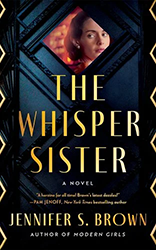All houses have their own stories to tell. The separate floors of an apartment building are layers of time and space, and behind each door stars a different family. Ellen Weinstein’s new picture book about home is both nostalgic and contemporary. It’s based on a building on New York City’s Lower East Side and its successive generations of residents. Jewish, Italian, Dominican, Puerto Rican, and Chinese families all share common experiences, but they are also sustained by their own unique cultures.
The families inhabiting the building are immigrants, with the exception of the Torreses, whom the author identifies as migrants. In 1914, the Epsteins arrive, fleeing the oppression of Jews in their native Russia. The Cozzis leave Naples, seeking better economic opportunities, as does the Chinese Wei family. Political instability in 1965 was a motivating factor for the Marteses from Santo Domingo. A complex mix of events influences their decisions, and a broad range of changes awaits them in New York.
Weinstein selects key moments and presents them with evocative images. “After school, Jenny cleaned,” she writes, showing the Epstein daughter sweeping the floor of their modest home in a long dress and white pinafore. On the same page, her parents work at sewing machines and align themselves with a union to improve their lives. Maria Torres, in a practice common to her community, returns to San Juan every year to visit relatives.
Rather than explicitly mentioning the tension between old and new, Weinstein illustrates how people adapt while still remaining faithful to who they are. Anna Cozzi listens to Italian opera on the radio “even though she didn’t understand the words.” On the next page, Anna is absorbed in the concert, chin in hand, while her parents sit across from her. Her father wraps his arm around her mother, who holds a sewing needle and fabric. Anna’s brother plays marbles on the floor. In the following image, Anna falls asleep dreaming of becoming an opera singer, integrating a core part of her heritage into her life in America. When Wei Yei walks through his neighborhood, he can choose from an array of ethnic foods: “peanut noodles, strudel, knish, kebabs, cannoli, or tostones.” The rhythmic sound of these words is appealing, but so is the memory of the foods his grandmother prepared for him in Fuzhou, his former home.
Weinstein concludes with a note explaining that she conducted research at several different Lower East Side institutions, including the Tenement Museum, the Eldridge Street Synagogue, and two public schools. Archival records and interviews with young people helped her recreate the “vibrant fabric” of the neighborhood. The book’s first page depicts a cutaway view of the apartment building, with detailed, miniaturized scenes visible on each floor and in each room. Weinstein has distilled the essence of New York city life, and has also given five individual stories their own unique space.
Emily Schneider writes about literature, feminism, and culture for Tablet, The Forward, The Horn Book, and other publications, and writes about children’s books on her blog. She has a Ph.D. in Romance Languages and Literatures.





